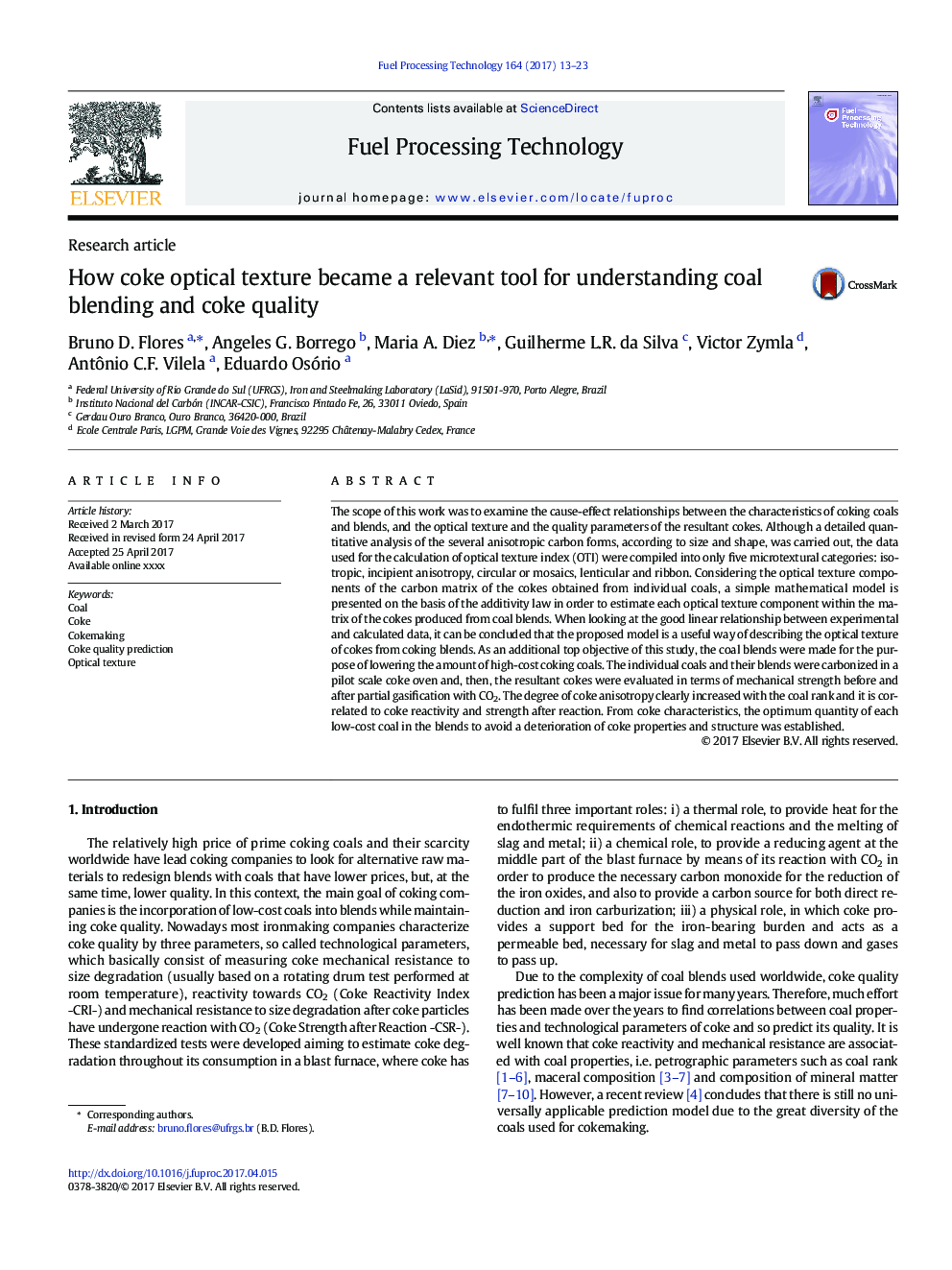| Article ID | Journal | Published Year | Pages | File Type |
|---|---|---|---|---|
| 4768827 | Fuel Processing Technology | 2017 | 11 Pages |
Abstract
The scope of this work was to examine the cause-effect relationships between the characteristics of coking coals and blends, and the optical texture and the quality parameters of the resultant cokes. Although a detailed quantitative analysis of the several anisotropic carbon forms, according to size and shape, was carried out, the data used for the calculation of optical texture index (OTI) were compiled into only five microtextural categories: isotropic, incipient anisotropy, circular or mosaics, lenticular and ribbon. Considering the optical texture components of the carbon matrix of the cokes obtained from individual coals, a simple mathematical model is presented on the basis of the additivity law in order to estimate each optical texture component within the matrix of the cokes produced from coal blends. When looking at the good linear relationship between experimental and calculated data, it can be concluded that the proposed model is a useful way of describing the optical texture of cokes from coking blends. As an additional top objective of this study, the coal blends were made for the purpose of lowering the amount of high-cost coking coals. The individual coals and their blends were carbonized in a pilot scale coke oven and, then, the resultant cokes were evaluated in terms of mechanical strength before and after partial gasification with CO2. The degree of coke anisotropy clearly increased with the coal rank and it is correlated to coke reactivity and strength after reaction. From coke characteristics, the optimum quantity of each low-cost coal in the blends to avoid a deterioration of coke properties and structure was established.
Keywords
Related Topics
Physical Sciences and Engineering
Chemical Engineering
Chemical Engineering (General)
Authors
Bruno D. Flores, Angeles G. Borrego, Maria A. Diez, Guilherme L.R. da Silva, Victor Zymla, Antônio C.F. Vilela, Eduardo Osório,
